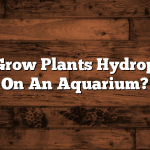Selecting the Right Hydroponic System
Hydroponic systems offer a highly efficient and controlled way of growing plants without the need for soil. Depending on your needs and available resources, there are a variety of hydroponic systems to choose from. One of the most commonly used systems is the nutrient film technique (NFT). This system involves a thin film of nutrient-rich water flowing over the roots of the plants, providing them with the essential elements they need to grow. The NFT system is ideal for growing leafy greens and herbs, but may not be the best option for larger plants with heavier root systems.
Another popular hydroponic system is the deep water culture (DWC). In this system, plants are suspended in a solution of nutrient-rich water, with their roots fully submerged. The oxygen levels in the water are carefully maintained to ensure that the roots receive enough oxygen for optimal growth. The DWC system is particularly suitable for growing larger plants such as tomatoes and cucumbers, as it provides ample space for root development. However, it may require more careful monitoring and maintenance compared to other systems.
When selecting the right hydroponic system for your needs, consider factors such as the type of plants you wish to grow, the space available, and the level of maintenance you are willing to commit to. It’s advisable to research and learn more about different hydroponic systems before making a final decision. By choosing the most suitable system for your specific requirements, you can maximize the potential of your hydroponic garden and achieve optimal results.
Choosing the Right Cucumber Varieties
Cucumber plants come in a wide variety of shapes, sizes, and colors, making it crucial to select the right cucumber variety for your hydroponic setup. When choosing cucumber varieties, consider factors such as space availability, growth habit, and taste preference.
Firstly, take into account the physical space available for your hydroponic system. Some cucumber varieties, such as bush or compact varieties, have a more compact growth habit and require less space compared to others. If you have limited space, consider varieties like “Spacemaster” or “Suyo Long,” which are perfect for small or vertical hydroponic systems. On the other hand, if you have ample space, vining varieties such as “Marketmore” or “Armenian” would thrive and produce an abundance of cucumbers.
Secondly, when choosing cucumber varieties for your hydroponic system, consider the growth habit of each variety. Some cucumber plants are considered determinate, meaning they produce a defined number of fruit on a compact bush before coming to an end. On the other hand, indeterminate varieties continue to produce cucumbers throughout the growing season. If you prefer a continuous supply of cucumbers, go for indeterminate varieties like “Lemon” or “English Telegraph.”
Lastly, taste preference is an essential aspect to keep in mind when selecting cucumber varieties. Do you prefer crisp and refreshing cucumbers for salads, or do you enjoy the crunchier texture of pickling cucumbers? Varieties like “Picklebush” or “Miniature White” are excellent choices for those who enjoy cucumbers specifically for pickling purposes. If you’re looking for a cucumber variety with a milder taste, consider English or Asian cucumber varieties like “Burpless Tasty Green” or “Shintokiwa.”
By taking these factors into consideration, you can confidently choose the right cucumber varieties that suit your hydroponic setup and personal preferences. The next step is to prepare your hydroponic system and set up the ideal growing environment for your selected cucumber varieties.
Preparing the Hydroponic Setup
To ensure a successful hydroponic setup, it is essential to follow the right procedures for preparation. The first step is to thoroughly clean and disinfect all the equipment and containers that will be used in the system. This is crucial to prevent the growth of harmful bacteria and pathogens that can negatively impact plant health. A solution of hydrogen peroxide or bleach can be used to effectively sanitize the equipment. Additionally, it is important to maintain cleanliness throughout the entire setup process, including regular cleaning of the working area and tools to minimize the risk of contamination.
After cleaning, the next step is to assemble the hydroponic system according to the chosen design or kit. It is important to carefully read the instructions provided by the manufacturer and ensure that all the components are securely connected. Pay close attention to the appropriate placement of pumps, air stones, and tubing to ensure optimal water flow and aeration. Moreover, it is crucial to check for any leaks or loose connections that could lead to water loss or damage to the system. Once the setup is complete, it is recommended to conduct a trial run to test the functionality and efficiency of the system before proceeding with the cultivation of plants. This will allow for any adjustments or repairs to be made before the plants are introduced to the system.
Preparing the hydroponic setup is a crucial step towards achieving successful plant growth and maximizing yields. By following proper cleaning protocols and assembling the system accurately, the risk of contamination and failure can be minimized. With a clean and well-functioning setup, the next step is to provide the ideal growing environment, which will be discussed in the following section.
Providing the Ideal Growing Environment
To ensure optimal growth and productivity, it is essential to provide the ideal growing environment for your hydroponic system. One key factor to consider is temperature. Most cucumber varieties thrive in temperatures between 75 and 85 degrees Fahrenheit (24-29 degrees Celsius). Monitoring and maintaining a stable temperature range is crucial for successful cucumber cultivation. Ensure proper ventilation and invest in a reliable HVAC system to regulate the temperature within the grow space.
Humidity levels also play a significant role in the cucumber’s growing environment. Aim for a relative humidity of about 50 to 70 percent. High humidity can lead to fungal diseases, while low humidity may hinder pollination and fruit development. Consider using humidifiers or dehumidifiers to maintain the optimal humidity levels. Also, adequate air circulation is vital to prevent the buildup of excess moisture and remove stale air that can harbor pests and diseases. Employ the use of fans or ventilation systems to facilitate proper air movement within the grow area.






